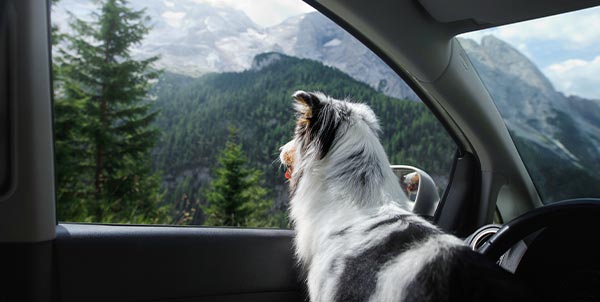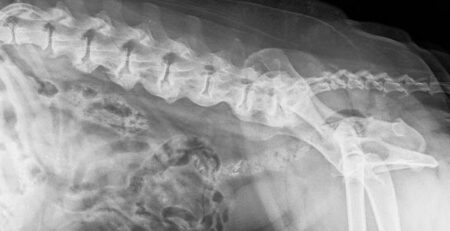Table of Contents
Dog in the mountains: here are the rules for a perfect and totally safe walk or vacation for your four-legged friend
If you decide to take your dog to the mountains, hiking at high altitudes will be an exciting experience for both of you.
But it is worth considering some basic precautions to avoid subjecting your dog to undue stress and fatigue.
Hiking with a dog in the mountains can present varying degrees of difficulty.
Generally the difficulty of a route is marked at the beginning and along the way.
There are tourist routes, which are undemanding and suitable for everyone but also routes for experts, with suspended passages and other difficulties.
Inform yourself before you set out-your dog may find himself frightened by difficulties or obstacles he is unable to cope with.
When you can take your dog to the mountains
Dogs can also accompany their humans on high-altitude hikes as long as their health conditions, especially from a cardiovascular point of view, are optimal.
The first recommendation is to have your dog examined by your veterinarian to ascertain its general physical condition and assess any physical exertion that the animal can sustain.
Dogs and mountain sickness: high altitude yes but in moderation
Moving up in altitude often requires a period of adjustment.
So-called “mountain sickness” can affect humans and dogs indiscriminately.
It is a condition due to lower atmospheric pressure that results in a reduction of oxygen in the body.
It generally occurs between 1,500 and 2,500 meters above sea level, so one must ascend in moderation, allowing the body to get used to the change in pressure, and pause at intermediate levels.
The dog’s ascents on the chairlift, then, require special attention.
How to take the dog to the chairlift
Our four-legged friends can also follow us on the chairlift.
However, the sudden change in altitude could trigger irritability, coughing, nausea, vomiting, and sialorrhea in the dog.
If such symptoms are present, it is advisable to return to the valley and allow the dog time to acclimatize.
Dogs on chairlifts must wear a muzzle and be kept on a leash, a necessary accessory not only in this particular circumstance.
Dogs in the mountains: never without a leash
Contrary to popular belief, dogs in the mountains should definitely not be allowed to roam free without a leash.
Leash walking protects your dog from possible aggression from herding dogs and wildlife, a more than obvious presence in mountain environments.
Just to protect the native fauna in some natural areas, the entry of dogs but also people is strictly forbidden, and prominent signs inform hikers of this.
Always abide by the prohibitions for the protection and safety of you and your dog.
The use of a leash prevents, also, the dog, stimulated in its predatory instinct, from chasing after possible prey.
The outcome of this hunt could be predation of the wild animal or an attack on your dog.
It may also happen that the dog, caught up in the chase, strays too far and gets lost.
In the mountains with a dog: the dangers at high altitude
Mountains, like any environment, also have their pitfalls. Here they are:
The viper bite
Snout and paws in dogs are the most affected areas. Once you locate the bite site, try to tranquilize and hold the dog still: the accelerated heartbeat causes the venom to circulate faster. Do not use tourniquets or incise the wound. Rather RUN TO A VETERINARY available in the area ASAP.
The stings of wasps and hornets
Unless your dog has taken one of these hymenoptera by mouth and is allergic, the insect bite usually causes only a little swelling. The matter is complicated if the tongue is pricked, which, as it swells, impedes breathing. The rule of thumb to seek veterinary care immediately always applies.
Fleas, mosquitoes, phlebotomes and ticks are everywhere, even in the mountains. And that is why anti-parasite prophylaxis should be carried out DURING THE WHOLE YEAR.
Rabies and distemper risk. On a walk, your dog may come across a fox: a bite or even a scratch is enough to transmit rabies or distemper. Vaccine prophylaxis, therefore, is critical.
Water contaminated with bacteria. There is no shortage of water sources in the mountains, but streams and troughs could be contaminated with bacteria. Such bacteria may be harmless to wildlife or farmed animals, but harmful to your dog to the point of causing gastro-intestinal problems.
What the backpack of the experienced four-legged hiker should contain
- a spare leash and also a lighted one in case of night hikes. Have the dog wear a harness: in addition to providing better comfort, the harness gives you better control and management of the dog in emergency situations.
- A fairly long rope and some carabiners. Should your dog fall down some cliff or slip into a ravine from which he cannot climb back up, rope and carabiners will help you pull him up.
- Nutritious kibble and snacks to make the dog replenish energy during the walk.
- Thermal water bottle and travel bowlfor your dog to drink whenever he feels the need and to ensure proper hydration
- First aid kit containing hydrogen peroxide, cortisone vials, gauze and bandages, tweezers to remove ticks, wet wipes
And finally, equip yourself with a dustpan and droppings bags.
Dog droppings, no matter how vaccinated your pet is, are capable of carrying parasites that are dangerous to wild animals.
Always collect feces not so much because of the soiling of the environment as for health reasons.
For routine examinations and checkups, the doctors on staff at
La Veterinaria Clinic
are always available to you.
We would also like to remind you that in case of need and urgency Clinica La Veterinaria is always open h24, every day including holidays and with First Aid service from 8 pm to 8 am.
For the joy of seeing them happy.











